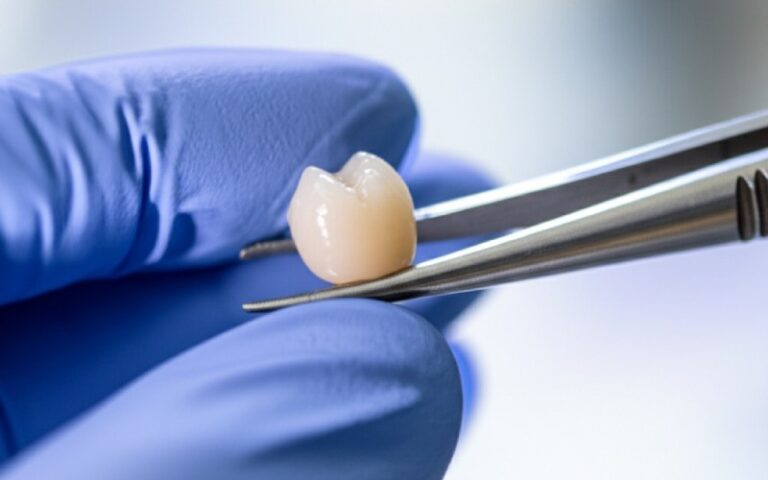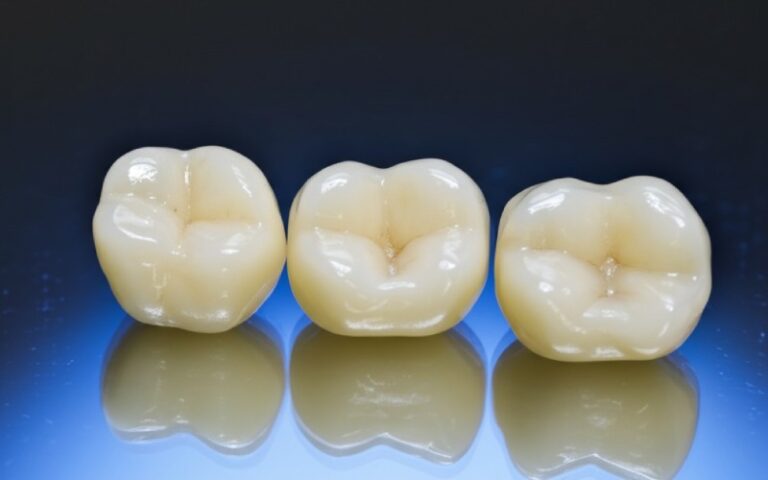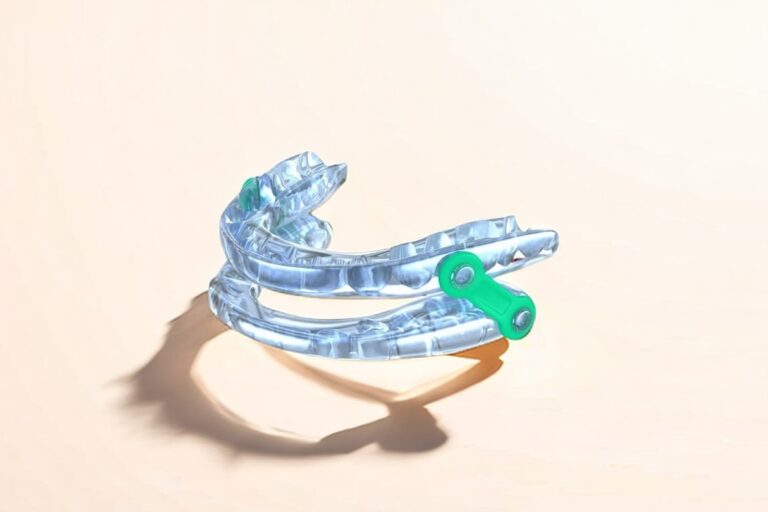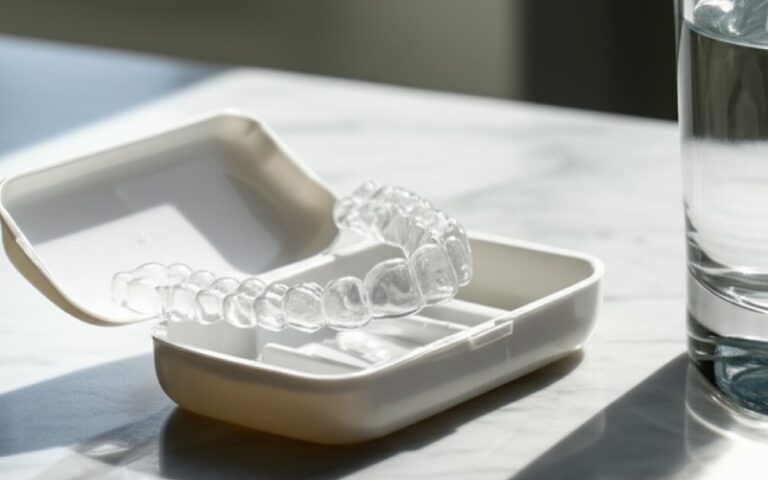
Elegir el mejor material de injerto óseo para un implante dental exitoso
In this article, I will share what I learned about choosing the best bone graft material for implantes dentales. I will make it simple. You will learn about the different types of bone graft materials. This will help you talk to your dentist and make a good choice for your oral health and your new dental implant.
Índice
Why Do I Even Need a Bone Graft for My Dental Implant?
A dental implant is like a screw. It needs to be placed into a strong foundation. That foundation is your jawbone. If you have had a missing tooth for a long time, you may have bone loss. This happens because the bone is no longer being used. The jawbone has deteriorated over time.
To get a dental implant, you need enough bone to hold it in place. If you lack sufficient bone, the implant might fail. A bone grafting procedure helps fix this problem. It adds bone or a special material to your jawbone. This makes your jaw strong enough to support a dental implant. Think of it like putting a post in the ground. You need to pack solid dirt around it, not loose sand. The same is true for a dental implant.
What is a Dental Bone Graft, and How Does It Work?
Bone grafts in dentistry might sound scary, but the idea is simple. Bone grafting is a surgical procedure. It is done to repair or rebuild bones. In dental bone grafting, we focus on rebuilding the jawbone. This is often needed before you can get a dental implant. The main goal is to create a solid bone structure for the implant.
The procedure involves placing a grafting material into the area where the bone is thin. This material acts as a scaffold. A scaffold for new bone gives your body a frame to work with. Over a few months, your body’s own bone cells grow into this frame. This process is called bone regeneration. The graft material helps your body create strong, new natural bone. This new bone will securely hold your new dental implant.
What Are the Different Types of Bone Graft Materials?
There are a few types of bone grafting material. It’s not just one thing. Your dentist will help you choose the right one. The four main types are autografts, allografts, xenografts, and alloplasts. Each one comes from a different source and works in a slightly different way.
Understanding these different types of bone graft options is important. An autograft comes from your own body. An allograft comes from a human donor. A xenograft comes from an animal, usually a cow. And an alloplast is a man-made, synthetic bone material. The choice of graft material will depend on your health, how much bone you need, and what your dentist thinks will work best for your dental implant.

Is Natural Bone Always the Best Bone Graft Material?
Many people think that natural bone is always the best choice. And in many ways, it is. When you use bone from your own body, it has the best chance of working. This is because it contains all the right ingredients for healing. Your body recognizes it and is less likely to have problems. This type of bone has living cells that help with new bone growth.
But using your own bone is not always possible or needed. Other types of natural bone materials, like an allograft or a xenograft, can also work very well. These materials have been carefully cleaned and prepared. They provide a great scaffold for your body to build on. They are very safe and have high success rates for helping you get a dental implant. Your dentist will talk to you about the best type of bone graft for your situation.
What is an Autograft and Why is it Called the “Gold Standard”?
An autograft is often called the “gold standard” of bone grafting. The reason is simple: the bone taken for the graft comes from your own body. It might be taken from your chin, the back of your jaw, or even your hip. Because the donor bone is your own, it is a perfect match. There is no risk of rejection or disease transmission. This is why it’s considered the ideal bone graft material.
The autograft bone is special because it is osteogenic. This is a fancy word that means it contains living bone cells. These cells get to work right away building new bone. It is also osteoinductive, which means it has proteins that tell your body to create new bone formation. The main downside of an autograft is that it requires a second surgical site. This can mean more pain and a longer recovery time. Still, for a strong and predictable result for your dental implant, an autograft is a great choice.
What is an Allograft, and Where Does This Type of Bone Come From?
An allograft is another common grafting material used for dental implant surgery. This type of bone comes from a human donor. It is human bone that has been donated, often from a cadaver. I know that sounds strange, but it is very safe. The allograft bone tissue is put through a very strict cleaning and testing process. This process removes all living cells and gets rid of any risk of disease transmission.
An allograft is great because it avoids a second surgical site. That means less pain for you. The allograft material acts as a framework, or scaffold. It is osteoconductive, meaning it provides the right shape for your own bone cells to grow on. Your body builds new bone around the allograft, and over time, it becomes part of your jawbone. This makes the jaw strong enough for a dental implant. Many dentists use allograft material with great success.
How Does a Xenograft Work for Dental Bone Grafting?
A xenograft is another good option for bone grafting. The bone for a xenograft comes from an animal. Most of the time, it comes from a cow. Just like an allograft, this bone tissue is highly purified and sterilized. All animal cells and proteins that could cause a problem are removed. This makes the xenograft very safe and biocompatible. That means your body will not reject it.
The main job of a xenograft is to be a placeholder. It is a great osteoconductive material. It creates the space and structure for your body to do its work. Your body’s own bone cells will grow all around the xenograft material. What’s interesting is that this type of graft material is absorbed by your body very slowly. This gives your jaw a long time to build strong, dense bone, which is perfect for a dental implant.
Are Synthetic Materials a Good Choice for Grafting Material?
Yes, synthetic materials are a very good choice for many people. These materials are also called alloplasts. They are man-made in a laboratorio. There is no need for a donor, either human or animal. This completely removes the risk of disease transmission. These synthetic bone materials are often made of calcium phosphate or other minerals that are found in your natural bone.
These materials are osteoconductive. They provide an excellent scaffold for your own bone to grow into. Some newer synthetic materials are also osteoinductive, meaning they can stimulate bone growth. They work by filling in voids and defects and fusing with the jaw. They are a safe and effective way to prepare your jawbone for a dental implant. If you are worried about using donor tissue, this might be the best bone graft material for you.
How Do These Materials Support New Bone Growth in the Jawbone?
All of these materials support the same goal: new bone growth. They do this through a few key properties. The first is being osteoconductive. Think of this like building a new house. You need a frame before you can put up walls. The graft material used acts as that frame. It gives your bone cells to grow into. It gives them a path to follow for bone regeneration.
Some materials are also osteoinductive. This means the graft material stimulates your body to make new bone. It contains special proteins, or growth factors, that send a signal to your body. The signal says, “We need new bone here!” This is very helpful when your body needs an extra push to heal. An autograft is naturally both osteoconductive and osteoinductive properties. An allograft can also have these properties. This ability to promote bone and integrate with the existing bone is what makes bone grafting so successful for dental implant procedures.
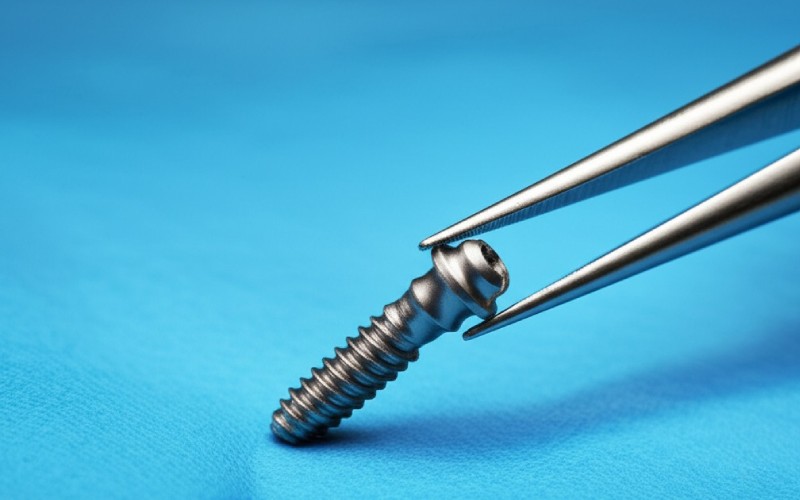
How Do I Choose the Best Bone Graft Material for My Dental Implants?
So, how do you make the final choice? Choosing the best bone graft material is a team decision between you and your dentist. Tthere is no single “best” option for everyone. The best bone graft material for dental implants depends on your specific needs. Your dentist will look at how much bone loss you have. He or she will consider the location in your jawbone. They will also talk to you about your comfort level with the different sources of grafting material.
For a small defect, a xenograft or synthetic bone might be perfect. For a very large area of bone loss, an autograft or allograft might be better because they can stimulate the body’s healing more powerfully. The most important thing is to have a good talk with your dentist. Ask questions. Understand your options. The goal is to create a strong and healthy foundation so your dental implant will last a lifetime. Schedule a consultation to discuss your options for a successful dental outcome.
Cosas para recordar
- You might need a bone graft if your jawbone is too thin to hold a dental implant. This is common due to tooth loss.
- The bone graft material acts as a scaffold to help your body grow new, strong bone. This process is called bone regeneration.
- There are four main types of bone graft: autograft (your own bone), allograft (human donor bone), xenograft (animal bone), and alloplast (synthetic materials).
- An autograft is the “gold standard” because it has living cells and there is no risk of rejection, but it requires a second surgical site.
- Allograft and xenograft materials are very safe and effective. They avoid a second surgery.
- The ability of these materials to help bone grow is called being osteoconductive (providing a scaffold) and osteoinductive (stimulating growth).
- Talk with your dentist to decide which bone graft material for dental implants is right for you. Your oral health is a team effort

